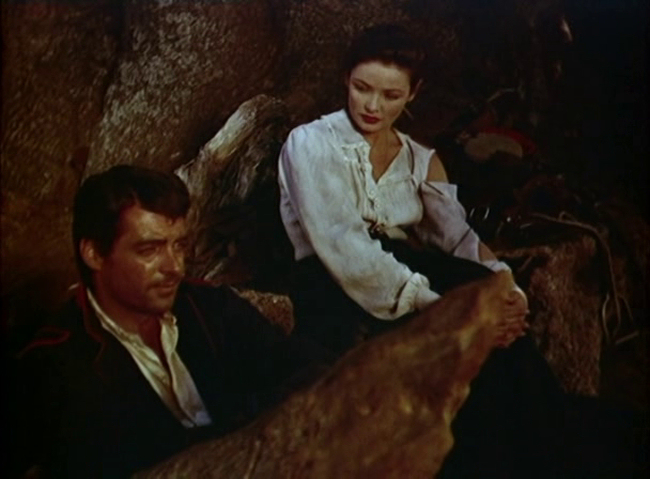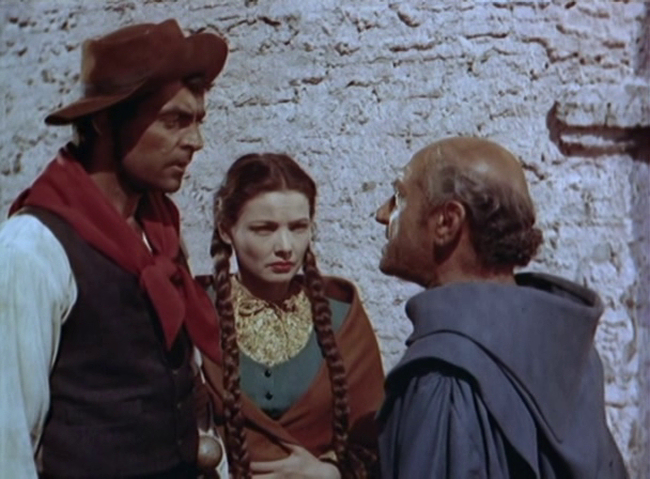
Whether it be the knight, the samurai, or the cowboy, most cultures have a class to which mythic, heroic figures frequently belong. In South America, there's the gaucho, which inspired Hollywood in 1952 to make Way of a Gaucho, for the most part self-consciously modelled on U.S. Westerns, swapping out the cowboy for the gaucho. Shot entirely in Argentina and subject to intense scrutiny and modification from the government of Juan Peron, among whose followers the gaucho was a celebrated symbol, it's difficult to say how much of the movie represents the intentions of 20th Century Fox or of director Jacques Tourneur. Tourneur, with his great talent for visuals, makes wonderful use of the locations but the story itself feels like a watered down combination of Robin Hood and Les Miserables, centred on a dull protagonist.

Supposedly the film's based partly on a late 19th century epic poem called Martin Fierro but the story only has a few details in common with Wikipedia's synopsis for the poem. Both stories are about a gaucho named Martin, played by Rory Calhoun in the film, who deserts from the army, but otherwise there's not much similarity.

Martin in Way of a Gaucho is son of a recently deceased gaucho and he now finds himself in the service of the son of his father's employer, a politician for the new government regime named Don Miguel Aleondo (Hugh Marlowe). The fundamental thematic conflict of the film is between the old, independent spirit of personal honour represented by the gaucho, fast disappearing in a country increasingly dominated by the civilising influence of modern government. The last act of the film, though, is mostly concerned with Martin's attempts to marry a wealthy woman named Teresa played by Gene Tierney.

Tierney's autobiography, which talks about her struggles with manic depression, has this to say about her experience with this production:
My personal life was in disarray . . . I was desperately unhappy the entire time the cast was on location and frequently sick . . .
The picture was the first starring part for a handsome young actor named Rory Calhoun. But for me the days passed in a haze.
Not all of it was mental. I had caught cold and was on the verge of pneumonia when I got there. The movie company had taken over a hotel in the pampas, where the peasants assembled in the summer to work under the Peronista regime. I had to report there immediately, miles from nowhere, the sun a living flame and the wind always blowing. I was too ill to work the first week and had to have shots every few hours from the company doctor.
For the first time in my memory, I was snappish and rude on set . . .
. . . I felt like an emotional misfit, and Argentina was not a good place to get one out of a depression. Juan Peron was at the height of his power. The cast was shown much of what his dictatorship had accomplished in the way of public housing and orphanages during tours arranged by the minister of propaganda. We were also invited, ordered, to be at the government mansion at seven o'clock one morning to be received by the Perons. Evita was not well enough to see us and the visit was cancelled, no disappointment to me. I had not recovered from what had now settled into a bad case of bronchitis and was spending whatever time I could in bed.
When I felt strong enough to attend a few parties, I met people who had been treated to other forms of Peron's hospitality--his prisons. They had been political prisoners jailed for the crime of disagreeing with the regime. They were mostly of the moneyed classes who felt that Peron was exploiting the poor and was a menace to the country's few remaining democratic reforms.
You could find no-one who openly criticised Peron, out of fear of being reported to the secret police. The atmosphere was grim and the situation a touchy one for the cast. Twentieth Century-Fox was using up frozen assets of theirs to make the picture [Profits from films made during World War II not permitted to be spent outside the country], with the consent of the government. We were asked not to be discourteous, whatever our opinions might be.

She gives a decent performance in the film in essentially a Maid Marian role. One of the primary differences between the film's story and that of Robin Hood is that there's no friendly Friar Tuck among the outlaws and religion is squarely on the side of law and order, frustrating Martin and Teresa's attempts to marry in the last part of the film as he repeatedly tries to appeal to his childhood priest, Father Fernandez (Enrique Chaico). Tourneur gets some great shots of Tierney trying to dodge troops searching for her in a church.

Fernandez acts as a moral centre for the film, unable to approve of Martin's illegal lifestyle but also reluctant to allow him to be captured. Ultimately the point the film seems to be making is that going your on way makes it hard to settle down and have a family, which ought to be your primary goal in life. Rory Calhoun, who may be fine in other pictures, lacks the sparkle of an Errol Flynn or Tyrone Power and is a bit overshadowed by his cool costumes. Far from being the celebration of an independent hero, it mostly seems to be about a life of endless trouble for this guy, reminding the audience it's best just to keep your head down and go along with the prevailing opinions.

No comments:
Post a Comment